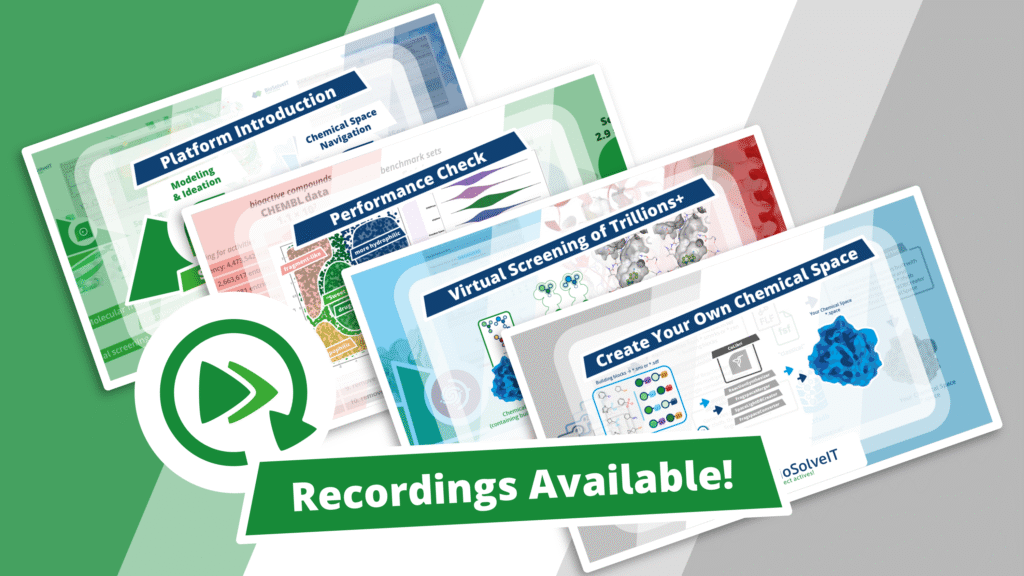Missed BioSolveIT Day 2025?
The recordings from BioSolveIT Day 2025 are now live! Packed with practical insights for medicinal and computational chemists, the sessions showcase how SeeSAR, infiniSee, Chemical Space Docking®, and CoLibri accelerate real-world discovery, from pocket-aware design and HYDE-guided decisions to trillion-scale, synthesizable chemical space exploration and in-house Chemical Space creation.
Dive in to see the tools’ capabilities in action and pick up concrete tactics for hit finding, scaffold hopping, and rapid triage.
Introduction to SeeSAR and infiniSee
Spotlight on BioSolveIT’s Product Portfolio: Computational Tools for Drug Discovery Campaigns
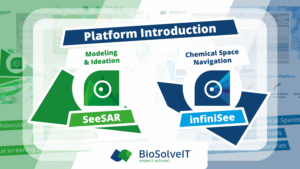
Speaker: Ajay A. Paul George, PhD (BioSolveIT)
- Synergies between SeeSAR and infiniSee: Analyze interactions in the pocket and design in SeeSAR, then explore options in infiniSee and round-trip top candidates back for docking and HYDE assessment.
- Interpreter-first scoring: HYDE’s visual decomposition (H-bonds, desolvation, clashes) accelerates medicinal-chemist decisions versus opaque single scores.
- Search the accessible chemistry: infiniSee mines trillion-scale, synthesizable Chemical Spaces to deliver scaffold hops and close analogs that you can actually order or make.
- Pick the right similarity matrix: Use Analog Hunter for local SAR, Scaffold Hopper for novelty/IP moves, Motif Matcher to enforce/avoid chemotypes.
Combinatorial Chemical Spaces vs. Enumerated Compound Libraries
Benchmarking Commercial Compound Sources with a Novel Set of Bioactive Molecules
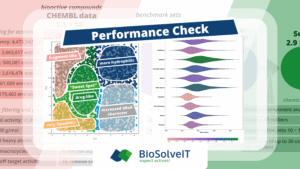
Speaker: Alexander Neumann, PhD (BioSolveIT)
- Transparent benchmarking & mapping: The talk summarizes a recent study built on a new bioactive benchmark set to compare commercial sources and quantify diversity. The concept and benchmark set can be employed for library strategies including prioritization, ordering and building perspectives.
- Spaces beat enumerated libraries for relevant analogs & diversity: For the investigated benchmark, combinatorial Chemical Spaces generally produced more and closer analogs than enumerated libraries; eXplore and REAL led among Spaces, while Mcule was strongest among enumerated sources.
- Orthogonal search = broader coverage: Using FTrees (pharmacophore features), SpaceLight (molecular fingerprints) and SpaceMACS (MCS/substructure) retrieves complementary, often unique scaffolds. Therefore, mixing methods and sources maximizes hit and hop discovery.
- Scale with synthesizability baked in: Combinatorial Chemical Spaces reach billions or even trillions of on-demand, make-able compounds and can be screened far faster than pre-enumerated lists, which is of extreme value when timelines and budgets are tight.
- What this enables: The benchmark set helps with evidence-based source evaluation and diversity mapping to decide which vendors best serve a given project’s needs.
Next Generation of Virtual Screening: Chemical Space Docking®
Structure-based Exploration of Trillion+-sized Compound Collections
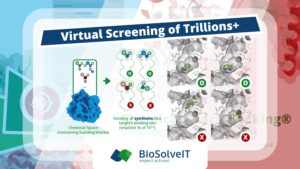
Speaker: Filomena Perri, PhD (BioSolveIT)
- What is Chemical Space Docking® (C-S-D): A structure-based virtual screening method that explores billion-trillions of compounds from combinatorial Chemical Spaces without brute-force docking every molecule. It focuses computation on only the most promising chemistry.
- Why it’s faster: Instead of enumerating full libraries, C-S-D prunes early and docks only high-value candidates, delivering results in days on stand hardware rather than months of brute force.
- Make-able hits by design: Candidates come from synthesis-on-demand Chemical Spaces, so shortlisted molecules are synthetically accessible and orderable, shortening the path to wet-lab testing.
- Real-world proof: in the ROCK1 study (Nature Communcations, 2022), screening a billion-scale REAL Space led to a 39% hit rate, with elucidated crystal structures matching docked poses as evidance that C-S-D scales while preserving pose realism.
- Live Demo of C-S-D in SeeSAR Space Docking® Mode!
Creating Your Own Chemical Space: First Steps towards a Successful Future
How to Assemble Your Own Ultra-Large Set of Synthesizable Compounds — Accompanied by Decision-ready Insights
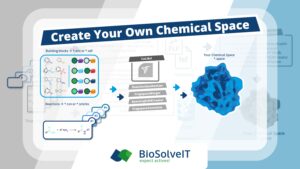
Speaker: Beatriz Büschbell, PhD (BioSolveIT)
- Start with the essentials: Building blocks + SMIRKS reactions. Your private Chemical Space is defined by accessible building blocks and robust reaction rules encoded in SMIRKS; scale comes from combinatorics (e.g., 1,000×1,000×1,000 = 109 candidates)
- Prioritize accessibility to move fast: Favor in-stock commercial building blocks (short lead times), then mix multiple suppliers and your in-house blocks to expand diversity and inject IP.
- Build the Space with CoLibri, then mine it with BioSolveIT tools: Use CoLibri to generate a screen-ready Space; explore with infiniSee (FTrees/SpaceLight/SpaceMACS) or run structure-based campaigns via Chemical Space Docking® in SeeSAR.
- Engineer reaction quality up-front: Curate reaction sets, test on a small diverse panel, filter out problematic functional groups, and adjust rules for substituent effects to keep synthesis success high.
- What you get: decision-ready, synthesizable options at scale. A well-built private Space yields billion-to-trillion candidate universes that are make-able by design, enabling rapid, data-driven triage and ordering.





